How to dual boot Windows 10 and MX Linux
Overview
In this post we will cover the process on how to dual boot Windows 10 and MX Linux. We are going to use a setup were it will have one HDD, Windows 10 already installed, manage partitioning for the MX Linux installation and in the end we will have MX Linux alongside Windows 10 in dual boot setup. It is strongly advisable, before proceeding with these steps, backup you system just in case.
Also another important thing, check your system does it boot in EUFI or in Legacy mode and create the bootable USB to match your PC boot mode. Meaning, you need to boot and install MX Linux in same boot mode as Windows, otherwise the dual boot setup won’t work.
Requirements:
- MX Linux bootable USB
- Free space on HDD
Important note: Before proceeding with the following procedure, please note first thing to do is to go in your BIOS and disable secure boot. MX Linux doesn’t support the secure boot and it’s quite possible that after the installation, you won’t be able to boot into MX Linux.
Creating a partition for the MX Linux
First we start with creating a partition for our MX Linux installation. In Windows 10 the process is quite simple. Windows 10 has it’s own built in tool to partition disks, which we are going to use. Besides this, there a lot of good and free tools to do this, that can be found online(easeus partition manager, minitool partition wizard - both are free).
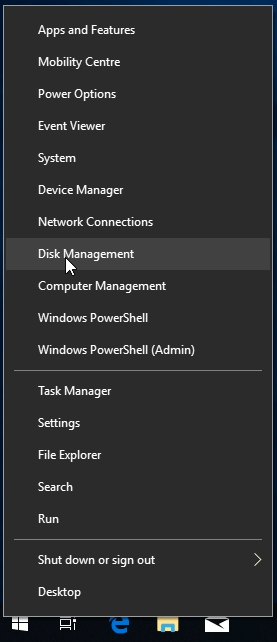
So, right click on the Start menu and click on the disk management. When the disk management window opens, on the bottom of the window, all HDDs in your system are going to be displayed. Right click on the partition with the letter C on it(aka your primary Windows partition) and click on the option Shrink volume. We will use that partition and split it in order to create a new partition.
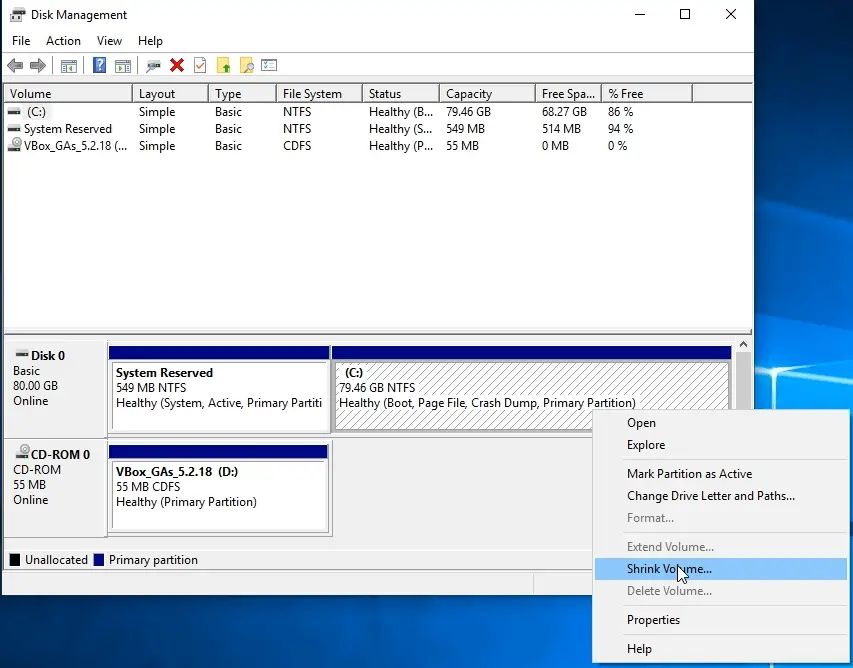
When you click the shrink volume, a prompt wizard will start. Click on Next. Next window will have couple of options. We need the option - Enter the amount of disk space to shrink in MB. In that field, enter the amount of disk space for the new partition and enter that number in MB(megabytes). For an example, we will create a new partition that will have 30 GB of disk space, so we will enter 30 000 MB. If you want, you can create partition with larger disk space capacity, over 30 GB if you need. But take note, you need to have enough of free space on your HDD in order to create a new partition.
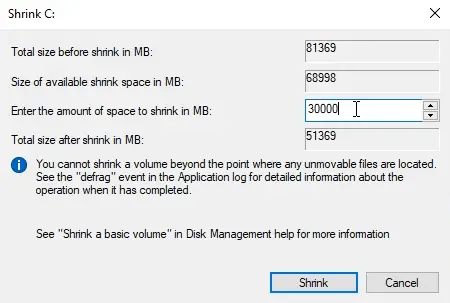
When you enter the size for the new partition, click on the button - Shrink volume. The tool will perform the operation very quickly. When it’s done, you can close the disk management tool. After that, go ahead, insert your MX Linux bootable USB, restart the PC and boot the installation.
Running MX Linux installation
Insert your MX Linux bootable USB, restart the PC and boot the installation. When the boot menu loads up, select the first option right away.
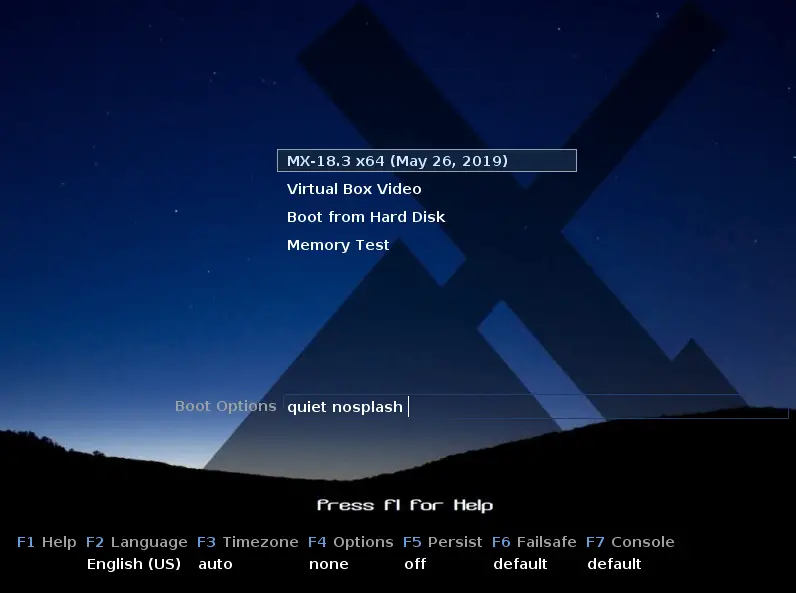
Once the live version of MX Linux is booted, run the installer, which is located right on the desktop.
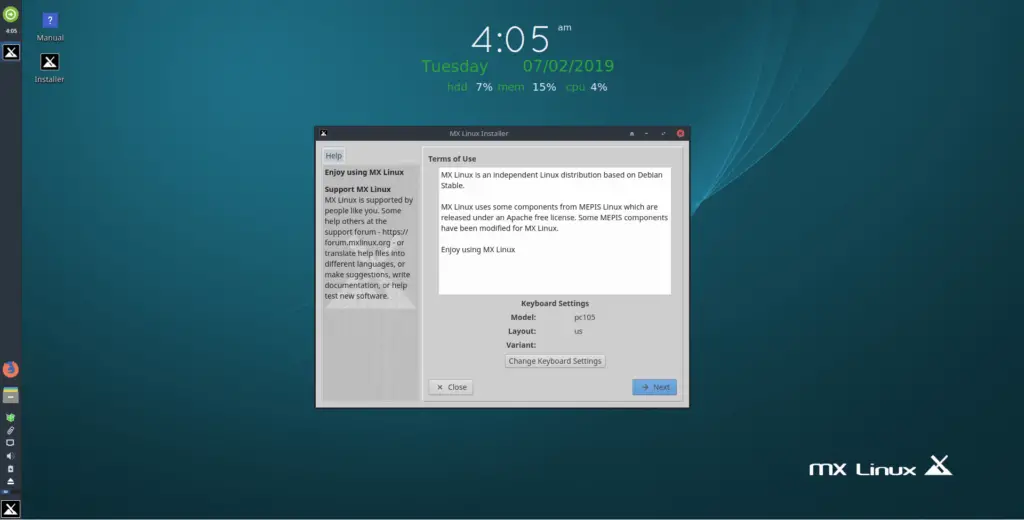
First screen is the keyboard setup screen. If you do need to change your keyboard settings, click Next once you’ve finished.
Formatting the new partition and dual boot setup
Right after the keyboard setting screen, you’ll get a disk partition screen. On the first option - Use disk, we must make sure to select the proper HDD on which we want to have dual boot setup. If you have only one HDD, then only that one HDD will be selected. Second thing on this screen we need to is to select the last option on the screen - Custom install on existing partitions. After that, click the button - Run the partition tool.
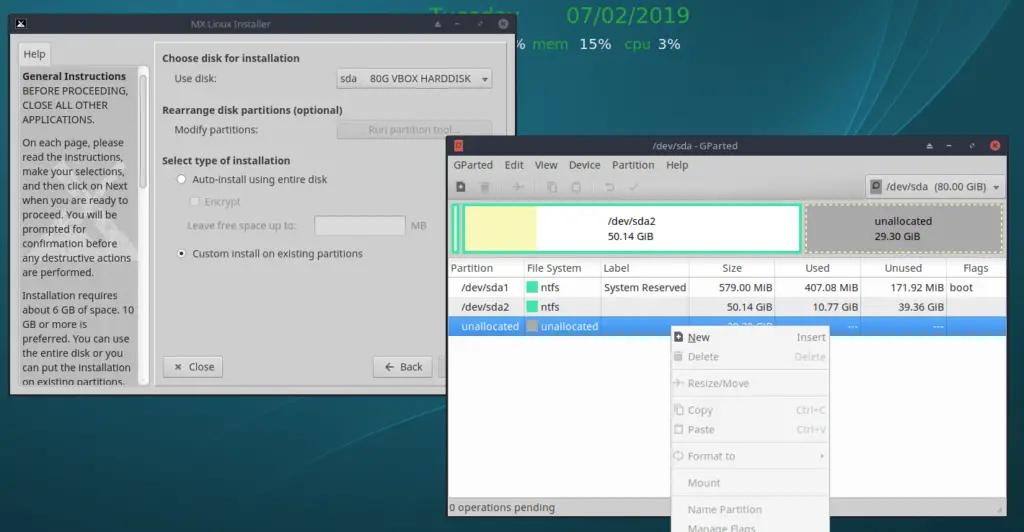
Setup will the GParted partition tool. In the partition tool, all our partitions will be listed, even the one non formatted we created earlier. Our partition will be the last one on the list and it will have labels - unallocated. Right click on it and click - New.
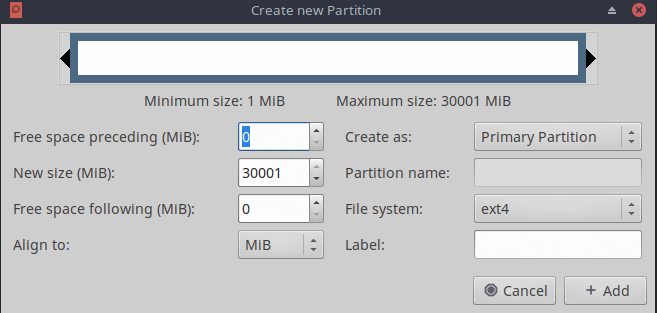
We are going to get - Create a new partition window. Make sure the parameters are like in the picture above with set parameters to be set as - Primary partition and file system - ext4. Click on the add button. The process will run. You can close the windows once you get the prompt - All operations successfully completed.
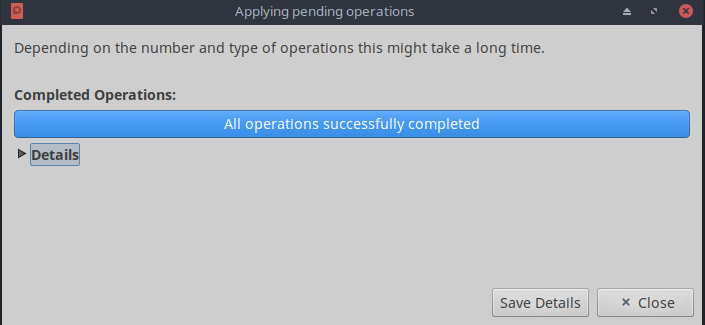
Next step is to setup our newly formatted partition. On this screen we need to select locations for our root, home, swap and boot partitions. We can also label them if needed. For the root partition, select the new partition we just formatted.
That is our system location and the MX Linux will be installed on that location. Next one is home partition, that partition is for our personal files. You can also assign location for it to be root, but if you want to also create a separate partition for home partition(that requires additional partitioning). If you don’t want to separate home partition then just select root location.
Swap is not mandatory, if you have plenty of RAM, you can leave it at none. If needed you can add later a swap file or create a swap partition. But. if you created a swap partition, then select it’s location. For boot set the location for it as root as well.
If you select the already pre-configured NTFS master boot record partition, the installation will overwrite that partition and you can lose boot record for Windows. So, set that one root as well. You can use as example the picture bellow.

When you click Next, the installation will start but while the installation is ongoing, there are still couple of things to setup. Now we are going to get - the select boot method screen. This is the screen where we need to setup dual boot for MX Linux and Windows 10. Check the option - Install GRUB for Linux and Windows. For the location to install on, select the - MBR(If your system has UEFI system then select the option - ESP). And for the system boot disk, select your complete HDD.

Configuring computer name and time zone
Now all is left is couple of parameters to configure - computer name, workgroup, enable Samba share and set the time zone. You can use the pictures bellow as an example and for the computer name and time zone of course you can set whatever you like.

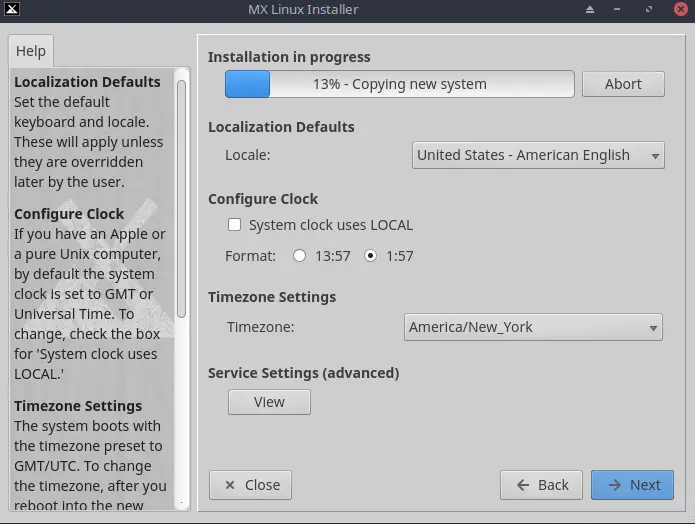
User account creation and finishing the installation
This is the last setup window. What is left is to create a user account, assign the password and make the root password as well. After that, click next and wait for the installation to finish.

Once the installation is complete, a new window will open where it will say that the installation is complete and it requires to reboot the system. When you get that window, you can remove the bootable usb and then restart the system.
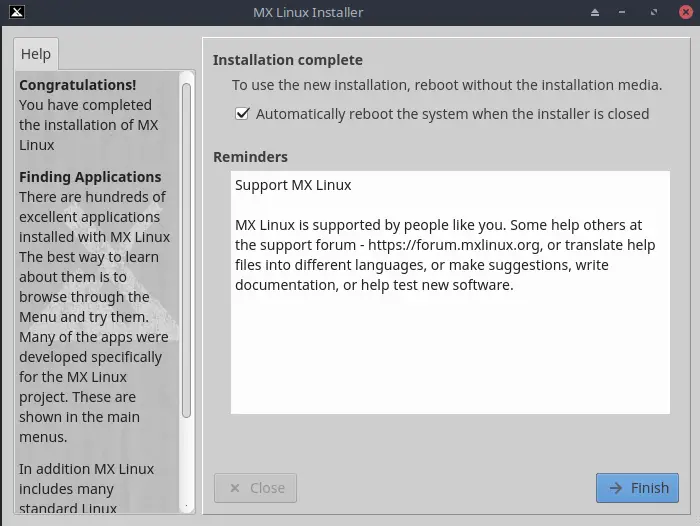
When the system starts to boot again, you need to get a GRUB boot menu on which will be listed both MX Linux and Windows 10(see picture bellow). On that menu you select which system you want to boot. That way you’ll know that the dual boot is working and you installed it succesfully.
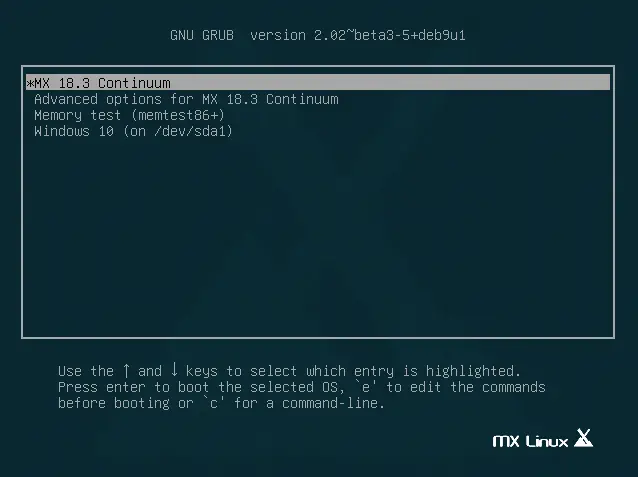
Summary
So, we covered the steps how to dual boot windows 10 and MX Linux. What I noticed first and from my perspective, I can’t say that the installation process is intended for beginners(meaning the people who will approach Linux the first time and to start learning). Take for example, Ubuntu, Mint and Manjaro installation - they are super easy and simple to work with and they are for sure for beginners.
But yet, it’s not complicated and has many steps to go through, like Debian(Debian to dual boot has become more user friendly and simpler thanks to the calamares installer), Arch and Kali.Overall, it’s not bad and I liked that the first boot was very fast on the first start. Once again, before running the installation, double check does your system run in Legacy mode or in EUFI and install accordingly.
I thank you for your time and I hope the post is useful to you.